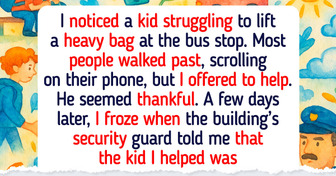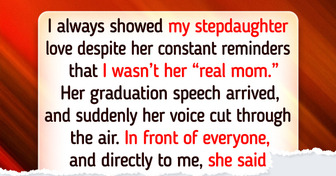My Mom Refused to Leave Me Any Inheritance, So I Turned the Tables on Her
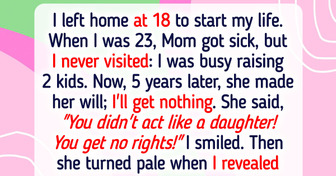

Well, it’s time to stretch your legs and take a walk in the park! The sun is shining, and you enjoy the weather and life on the whole. That’s when you spot a rapidly growing vertical cloud.
Bright white at first, it’s approaching alarmingly fast, becoming dense and inky. The sky is darkening, and a gust of wind blows the hat off your head.
And then, your hair starts to stand on end! That’s your cue to run for your life — you’re about to be hit by lightning! At this very moment, positive charges are rising through your body.

They’re reaching toward the negatively charged part of the storm. If you don’t react fast, these charges will meet, and it’ll end badly for you.
If there’s nowhere you can hide, crouch down and try to make yourself smaller than the objects around you. Don’t lie flat on the ground — it may be wet and, thus, a great conductor of electricity.
There are also other signs that scream danger during a lightning storm. Your palms may begin to sweat. You might hear bizarre crackling, buzzing, or vibrating sounds coming from metal objects nearby.
Your skin can start to tingle. There might be a strange metallic taste in your mouth. If you’re sure you’re not chewing on tin foil, then look out!
Plus, you’re likely to smell chlorine. That’s ozone. Electrical charges split the molecules of nitrogen and oxygen (which are the main gases forming the atmosphere) into separate atoms.

When these atoms come together again, some of them produce molecules made up of three oxygen atoms — that’s ozone. You can smell it during a thunderstorm because downdrafts bring it from high altitudes to your nose level.
You can figure out how close a thunderstorm is by measuring the time between spotting the lightning and hearing the thunder. Every five seconds is one mile [1.0 mi 1.6 km].
The sky over your head is darkening and turning ominously green. Something hits you on the cheek — ouch! It hurts! You pick up the offending object — it’s a massive hailstone! But it’s not that cold outside, and it’s not raining...
You notice how still everything is, how quiet. There’s no wind whatsoever. It makes you think about the calm before the storm.
And indeed, soon you hear some noise. It’s approaching rapidly and turns into a loud roar — as if a freight train is moving toward you.

Only it’s not a train. It’s a tornado, and you have almost no time to escape! The funnel isn’t visible behind a cloud of debris. But you can’t mistake this rotating column of air for anything else.
If the tornado catches you on the road, get as far from your car as you can. This will prevent the vehicle from being hurtled toward you. Find a ditch, lie down in it, and cover your head.
If you’re inside, get away from windows and hide underground if possible. Now, you’re at the seaside, walking along the shore and enjoying a light breeze. Suddenly, the ground starts shaking under your feet! Must be an earthquake!
The next weirdness you notice is the water retreating from the beach at breakneck speed. It leaves behind the exposed ocean floor, reefs, and even fish!
That’s when you hear a distant roaring sound. It’s a tsunami! And you only have a few minutes to save your life! Get to high ground immediately — a giant wave is already speeding toward the shore!
It’s not the only way a tsunami can creep up on you. It doesn’t necessarily come crashing against the shore as a series of huge waves.
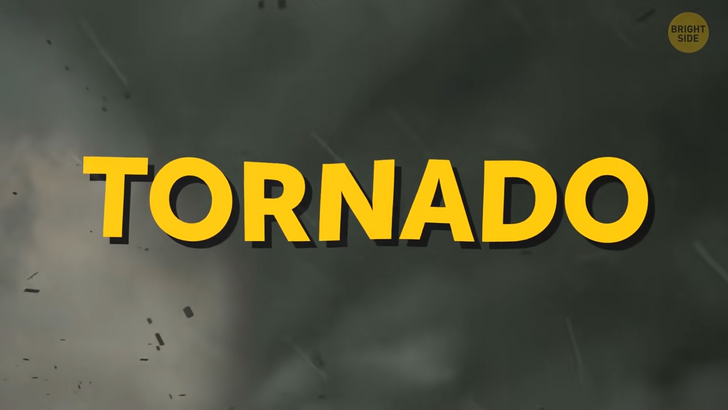
A tsunami can look like a rapidly rising tide. It usually goes hand in hand with severe underwater turbulence. It pulls people under the surface and tosses heavy objects around.
You can also notice seawater bubbling, swirling, and creating bizarre patterns. It’s another sure sign a tsunami’s coming! Your dog’s restless. It’s scratching the entrance door, roaming around the apartment, and trying to hide in the corner. Usually calm and docile, the pooch is now howling and barking.
The weather’s also been crazy for the past several days. It’s hot one day and chilly 24 hours later. Plus, you’ve noticed that the stream near your house has livened up, bubbling as it’s rushing past. Only when glasses start to clink in your cupboard do you realize what it means. The clatter is produced by foreshocks — tiny earthquakes leading up to the “main event.”
Earthquakes often occur in clusters. If there are several weak quakes, a much bigger one might be on the way. Some time before the disaster strikes, you might notice bizarre blue lights. Some of them seem to be coming from the ground, others are hovering in the air.

These are so-called “earthquake lights.” Emitted from rocks under great stress, they can be seen days or mere seconds before the ground starts shaking. At the same time, some experts doubt earthquake lights exist.
If you think an earthquake is about to happen and there’s a catfish in your aquarium, pay attention to its behavior. Scientists have proved this species can react to earth tremors. The fish become restless when seismic activity is high.
Some bugs can feel a storm coming. They get ready for the natural disaster by stopping any movement. That’s why if you notice that lots of insects around you look drowsy, search for shelter.
As for bees, they can predict heavy rainstorms. They begin to work much harder the day before it starts raining. Square waves occur when two different wave patterns crash into each other. This phenomenon looks awesome — but only if you’re watching it from the shore. Don’t even think of getting in the water to play in such waves. In that place, there are cross-currents that can easily pull even a skilled swimmer under the surface.
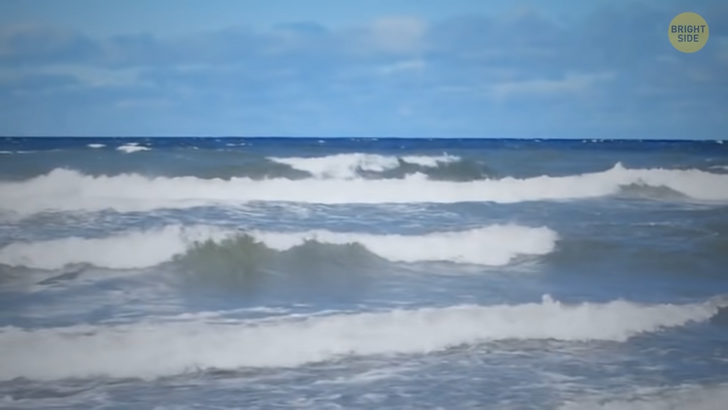
And if you see wild, choppy waves carrying ocean debris and seaweed, stay out of the water too. It can be a sign of a strong rip current. It can carry you far away from the ocean.
If you see smelly green stuff on the surface of a lake or sea, stay away from the water. It can be a hazardous algal bloom. You won’t be able to tell whether it’s toxic or not at first sight. That’s why it’s better to steer clear of it altogether.
Three to four [3 to 4] days before a hurricane arrives, the sea or ocean surface can swell up to 6 ft [2 m]. Waves hit the shore every 9 seconds. The closer the hurricane, the more rapidly the waves crash against the shore. They also get higher — sometimes up to 16 ft [5 m]! The sky is littered with light, fluffy clouds. Roughly 36 hours before the hurricane reaches the shore, the atmospheric pressure begins to drop.
After that, the wind speeds up. Wispy, hair-like clouds appear in the sky. Eighteen hours before the hurricane makes it to the shore, the sky opens up, and it starts to pour. The rainwater often floods low-lying areas, welling up to 15 ft [4.5 m].
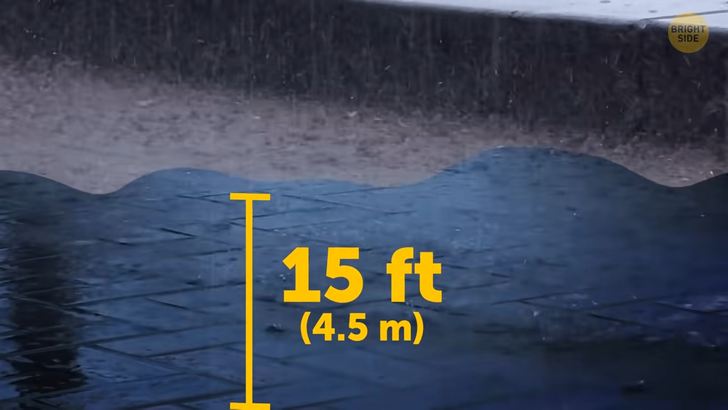
When the hurricane is 12 hours away, a powerful gale starts to bring along loose debris. Six hours before the landfall, the wind speed is already 90 mph [145 kph]. It’s strong enough to break and even uproot trees, fling around large debris, and flip cars.
By the way, let’s say you’re sailing, and there are some sharks circling your boat. Keep an eye on them. If the predators suddenly leave you alone and head for deep water, it might mean a hurricane is drawing closer. Get back to dry land as fast as you can and warn others.
If during a period of heavy rains you hear a roaring sound, it might be a flash flood moving in your direction. If you’re near a river at that moment, you might see debris coming down with the flow. The water can be changing its color and becoming cloudier and darker.
These signs should set alarm bells ringing in your head. If your gut feeling is right, you have no time to waste. Try to get away from that place as fast as you can — flash floods are often lethal.
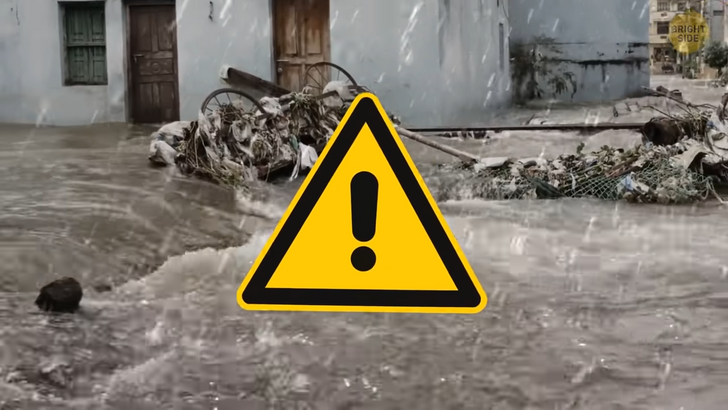
If you’re out in the wild, pay attention to the water in creeks, streams, and rivers. If it’s falling or rising rapidly, it might be a sign a landslide is about to happen.
And if you see the water turn muddy, don’t wait for more evidence. Get out of the area immediately.



